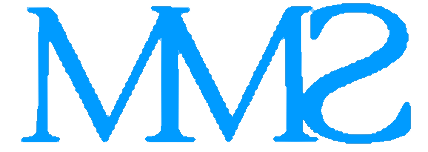The Dyslexic Difference
“Given appropriate instruction meeting very specific science-based criteria, our dyslexic students can absolutely learn to read and to write, to pass the threshold into the game. I have seen this done, and I know it to be true. “
Megan McDonald
For most of us the distribution of frontal processing units, minicolumns, is bell-shaped. These units allow us to make connections between ideas. When mini columns are very densely packed together they make connections with columns with very similar functions. In Autism, for example, the axons are extremely close together, allowing this student population to excel in highly detailed academic areas.
The minicolumns are very far apart in the dyslexic brain, however. Because the axon lengths must then be significantly longer, they are able to make connections with columns of many purposes. Dyslexics are, therefore, known to excel in academic disciplines in which the big picture is required. Specifically, the four known strengths of the dyslexic profile are as follows:
- Art and Architecture, which utilize excellent spatial reasoning skills to manipulate objects in space.
- Law and other disciplines which laud interconnected reasoning, or the ability to form connections between seemingly unrelated subjects.
- Authors and actors, which utilize superior narrative reasoning to connect a series of mental scenes from fragments of past personal experience.
- Engineers and Entrepreneurs, required to make best-fit predictions in situations with incomplete information.
Brock and Fernette Eide
Science can determine genetic predisposition to dyslexia by the sixth month of gestation. In essence, the affected neurons presented in a different area than intended, and language, therefore, requires more effort/opportunity to build the appropriate networks.
Science tells us that phonology is one of our earliest developing systems, then building upon phonology, we learn syntax. Building on phonology and syntax, we learn word order. Finally, building on phonology, syntax, and word order, we learn semantics. This process is universally replicated in all cultures–speech develops first and then reading later. Is phonology, then, just the ability to identify a sound? Phonology is actually much, much more challenging–a complex science absolutely foundational to one’s ability to read and write. Phonological awareness is the single greatest predictor of reading ability. Phonology has many diverse components. Once a sound is isolated and presented to a student, is the student aware of how his or her mouth or tongue moves as the sound is made? Can the student hear the sound correctly? Very importantly, can the student say the sound correctly? A student must be able to segment a word into its phonemes, isolate a specific phoneme, delete the phoneme, add a new phoneme, and then blend the phonemes together to say the new word.
For dyslexics, the right side, not the left side, is more active in reading; the brain structure is different in very specific areas essential for language. So if the foundation is weak, and neuroscience shows us it is weak in those with dyslexia, how can we possibly expect the higher-order skills to develop? Our house is built on sand and it will not, and has not, stood.
Given a traditional reading instruction method, our dyslexic students can likely learn phonics or language in isolation, but they cannot use it. They cannot apply it to an unknown word. This is a failed system. We know that 92% of children who lack phonemic awareness at the beginning of first grade will fail to learn to read except through memorization of words. Our goal is not to achieve an isolated language task on a specific day, but much more importantly, to achieve language comprehension, manipulation, application, and mastery. I have seen this done, and I have participated in this journey over and over again. This opportunity is open to your student, right now.
A dyslexic student has very little instinct for language. Each language action must be first planned and then, perhaps painfully, executed. I know that dyslexic students can learn enough language, enough writing, enough reading skills, through various appropriate science-based methodologies, to play ball, on the field, in the system. The language will no longer then be their barrier of access to the game, or to success. Text is NOT the determinant, it is the threshold, at best. By advocating for remediation I am absolutely not asking our dyslexics to accept the existing paradigm. Rather, I am advocating that reading and writing are a threshold to a lot of pretty great opportunities. Given appropriate instruction meeting very specific science-based criteria, our dyslexic students can absolutely learn to read and to write, to pass the threshold into the game. I have seen this done, and I know it to be true.

